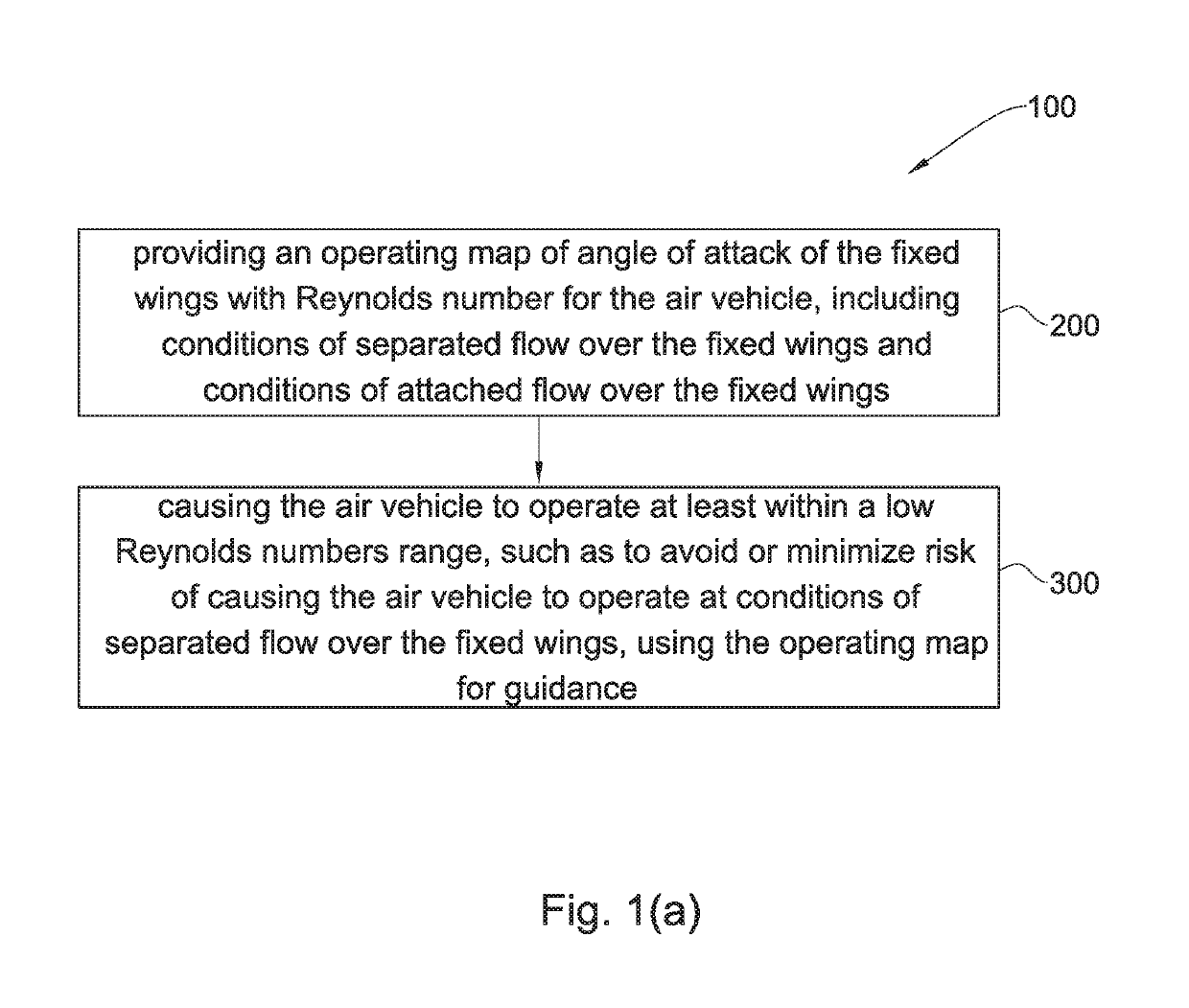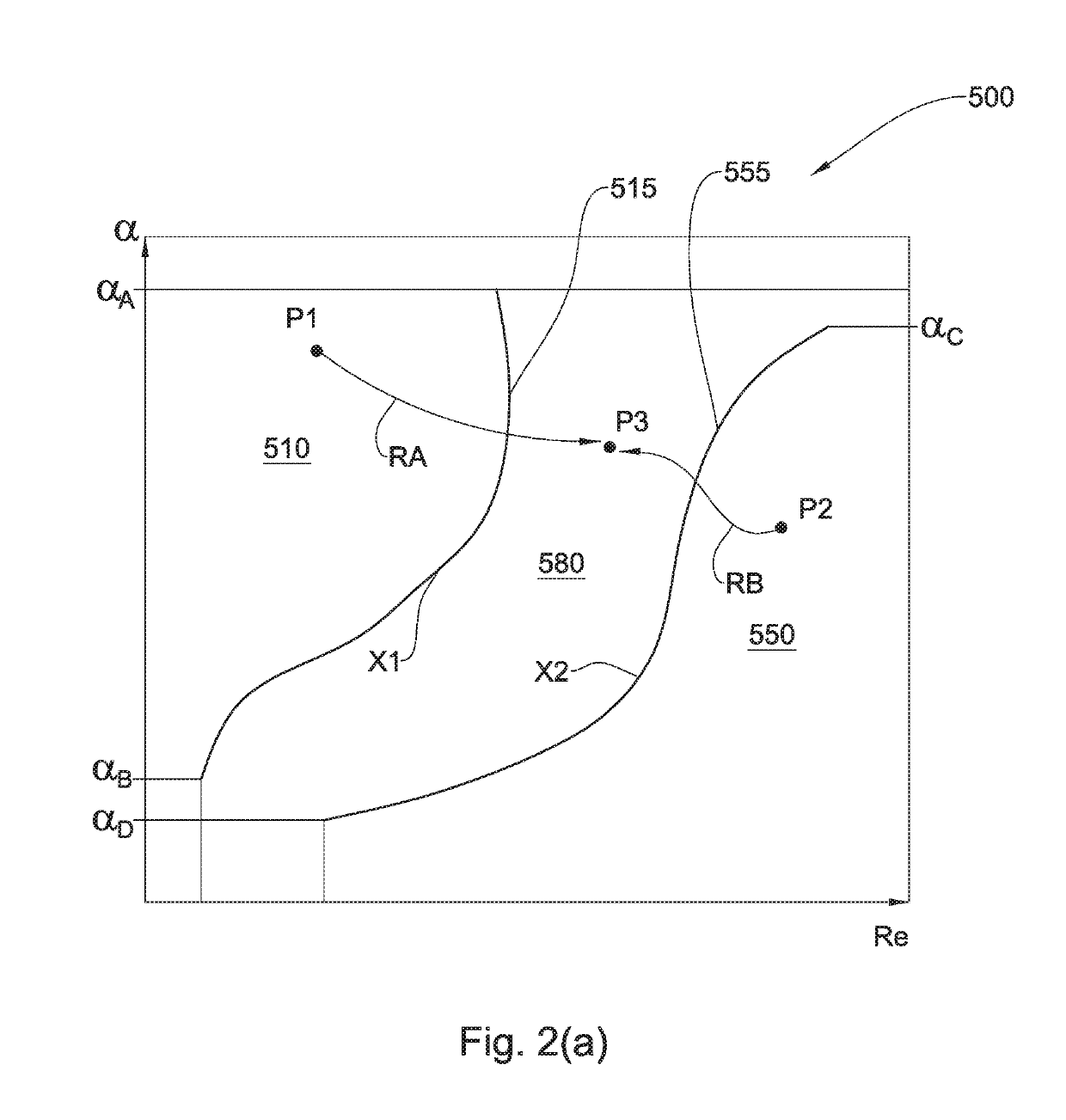Method for operating an air vehicle
a technology for air vehicles and airframes, applied in the direction of automatic actuation, aircraft navigation control, vertical landing/take-off, etc., can solve the problems of radical degradation of air vehicle performance, poor lift and high drag, and flight safety
- Summary
- Abstract
- Description
- Claims
- Application Information
AI Technical Summary
Benefits of technology
Problems solved by technology
Method used
Image
Examples
Embodiment Construction
[0126]Referring to FIG. 1(a), a method for operating an air vehicle having fixed wings, according to a first example of the presently disclosed subject matter, generally designated 100, comprises the following general steps:[0127]Step 200˜providing an operating map of angle of attack of the fixed wings with Reynolds number for the air vehicle, including conditions of separated flow over the fixed wings and conditions of attached flow over the fixed wings[0128]Step 300˜causing the air vehicle to operate at least within a low Reynolds numbers range corresponding to the operating map, such as to avoid or minimize risk of causing the air vehicle to operate at conditions of separated flow over the fixed wings, using the operating map for guidance.
[0129]Step 300 can be of particular significance during certain critical phase in the flight envelope of the air vehicle, for example take-off or landing for conventional type air vehicles, including STOL air vehicles. Referring to FIGS. 3(a) to...
PUM
 Login to View More
Login to View More Abstract
Description
Claims
Application Information
 Login to View More
Login to View More - R&D
- Intellectual Property
- Life Sciences
- Materials
- Tech Scout
- Unparalleled Data Quality
- Higher Quality Content
- 60% Fewer Hallucinations
Browse by: Latest US Patents, China's latest patents, Technical Efficacy Thesaurus, Application Domain, Technology Topic, Popular Technical Reports.
© 2025 PatSnap. All rights reserved.Legal|Privacy policy|Modern Slavery Act Transparency Statement|Sitemap|About US| Contact US: help@patsnap.com



